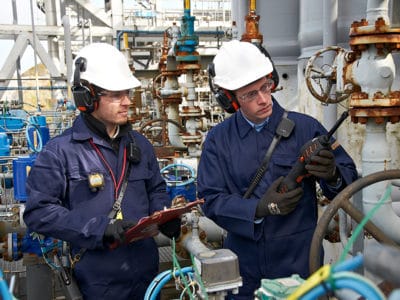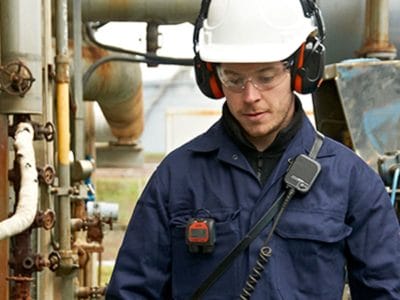
Monitoring Benzene
Formula: C6H6 | CAS: 71-43-2
Protecting both people and the environment whilst meeting the operational needs of your business is paramount and if you have operations in the UK you will be well aware of the requirements of the Control of Substances Hazardous to Health (CoSHH) regulations and likewise the Code of Federal Regulations (CFR) in the US.
Similar legislation exists worldwide, the common theme being an onus on hazard identification, risk assessment and the provision of appropriate control measures.
How to Monitor Benzene – The Complete Guide
Benzene is an important organic chemical compound with the chemical formula C6H6. The benzene molecule is composed of six carbon atoms joined in a ring with one hydrogen atom attached to each. As it contains only carbon and hydrogen atoms, benzene is classed as a hydrocarbon.
Benzene is a natural constituent of crude oil and is one of the elementary petrochemicals. Due to the cyclic continuous pi bond between the carbon atoms, benzene is classed as an aromatic hydrocarbon, the second [n]- annulene [6]-annulene. It is sometimes abbreviated Ph–H. Benzene is a colourless and highly flammable liquid with a sweet smell.
– Wikipedia
”According to the European Agency for Health and Safety at Work (EU-OSHA), 15 % of workers across the European Union (EU) have to handle dangerous substances as part of their job, and another 15 % report breathing in smoke, fumes, powder or dust at work which could be hazardous to their health. The EU has brought forward essential legislation relating to so-called physical and chemical agents in the workplace over the last two decades and the Chemical Agents Directive is ‘celebrating’ its 20th anniversary during 2018.
European Agency for Health and Safety at Work (EU-OSHA)
Why is benzene so hazardous?
From a long term (chronic) health perspective, the World Health Organisation (WHO) and International Agency for Research on Cancer (IARC) classify benzene as a group one carcinogen. Prolonged exposure to high concentrations of benzene causes leukaemia and impacts red and white blood cells. Regular exposure can lead to chronic effects including:-
- myeloid leukaemia
- lymphocytic leukaemia
- non-Hodgkins lymphoma
- multiple myeloma
- aplastic anaemia
Effects of humidity
The presence of humidity in the sample gas can unfortunately disrupt the measurement leading to inaccurate results. Heated inlets to achieve a stable temperature (typically 50oC) are effective but power hungry and are clearly only applicable to fixed systems. They are still a challenge to achieve in, say a refinery, where stringent intrinsic safety (IS) requirements have to be met.
Fixed, Portable or Personal Monitoring
ION Science are the only manufacturer in the world to offer personal, portable and
fixed detection solutions for Benzene. The entire range of Benzene detection
instruments are PIDs, or Photoionisation Detectors, using UV photons to ‘ionise’
VOCs in their sample chamber, giving accurate information in real-time.
- Fixed monitoring for benzene solutions (Titan | FalcoTAC)
- Portable monitoring for benzene solutions (Tiger Select)
- Personal monitoring for benzene solutions (CubTAC)
Download our FREE Guide
“How to Monitor Benzene – The Complete Guide”
How to monitor benzene – the complete guide which can be downloaded below provides the reader with an in-depth balance of knowledge covering all areas within the benzene series. With a seemingly inexorable rise in the production and release of benzene into the environment it is vitally important that the health dangers and legislative provision are understood. The direction of travel for the exposure limit is decreasing and real-time monitoring using a range of PID solutions in combination will ensure that you go beyond compliance in the safety, health and wellbeing of your most valuable asset, your workforce.

Related Guides
Gas Detection Equipment for the Detection of Benzene
Download your FREE Guide
Simply complete the form below to obtain your FREE Guide on “How To Monitor Benzene – The Complete Guide”.










 United Kingdom
United Kingdom






